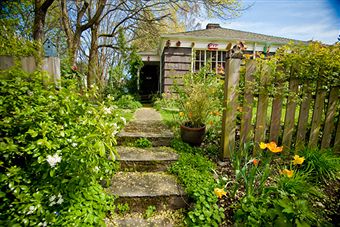If you are creating your own kitchen garden, you would probably be considering adding some herbs to the mix as well. Many people know how herbs can be extremely versatile in the kitchen. If you have your own edible landscape, you probably should be knowing how to grow herbs. If not, then that’s something you must look into seriously. Here are a few things to ponder over as you analyze how useful growing herbs could be.

What are your favorite herbs?
Most people know at least an herb or two. Though you are not into professional cooking, having tasted a variety of food over the years would have helped you ascertain the kind of food you like and what you would consider cooking. In case you aren’t familiar at all, head to a grocery store and pick up some herb varieties so that you can decide which variety/varieties you would consider growing.
What complements herbs the best?
The majority of dishes require an herb or two. In fact, you can give baking a pleasant twist (in terms of taste) by adding some herbs. Basil, thyme, and oregano complement chicken well, and also add to the deliciousness of pastas and rice dishes.
Mint is quite versatile and blends well with both sweet and savory dishes. It’s also quite easy to grow. You may use mint as an ice cream topping, or freeze a mint leaf in an ice cube to give the cube a unique look. Chopped chives sprinkled over baked potatoes or salads give a delicious look to the dish and could be cut fresh easily every time you want to use them.
What herbs can be grown well locally?
To find out what herbs is your climate well-suited for, contact a local garden center. Some herbs grow well in warm weather conditions, and others are suited for cooler climate. For example, parsley can be grown as a perennial herb and enjoyed for years together, even if the weather conditions are a bit too harsh.
Where Would You Grow Your Herbs?
If you have decided to grow a particular herbs, it’s now time to pick the exact spot for it. You are probably also growing an herb to make good use of empty ground you have. Or you are growing an herb, in a particular spot where people spend most of their time, for its insect-repelling qualities – for instance, basil or lemon balm. Know why you’ve selected a particular plant, and how or what it would appear like when positioned in a specific location. This should help you choose the spot.
What fruits and vegetables would the herb complement?
Since there would be other edibles in the landscape, give a thought to what herbs would complement the other edibles when baking or cooking. For example, in case of a salad made primarily from apples and berries, fresh mint would bode well. Or you may consider growing some rosemary so that you can sprinkle them on your pizza made from fresh-grown tomatoes.
Landscaping edible items can ultimately help you add a lot of flavor to your food. To relish the taste of different herbs, you need not be a professional chef who knows it all. A few herb varieties should suffice for your edible landscaping, helping you discover the variety and color the different herbs end up adding to your dishes.



